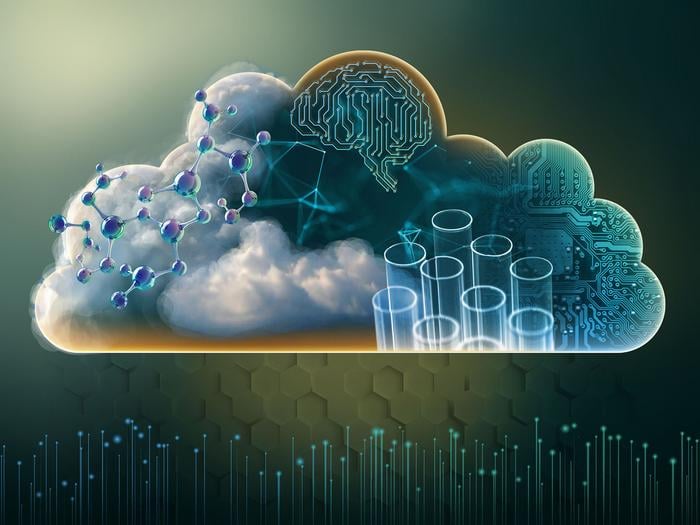Scientists have successfully ported advanced computational chemistry tools to the cloud, potentially revolutionizing access to high-performance computing resources for researchers worldwide.
Summary: A team led by Pacific Northwest National Laboratory has demonstrated that cloud computing can complement traditional supercomputers in solving complex scientific problems, particularly in computational chemistry. This approach could democratize access to advanced computing resources and accelerate scientific discovery.
Estimated reading time: 6 minutes
In a significant leap forward for scientific computing, researchers have shown that cloud computing can provide a flexible and powerful alternative to traditional supercomputers for complex chemistry simulations. This breakthrough, detailed in a recent publication in The Journal of Chemical Physics, opens up new possibilities for researchers across the globe to access advanced computational resources.
A New Paradigm for Scientific Computing
The initiative, called Transferring Exascale Computational Chemistry to Cloud Computing Environment and Emerging Hardware Technologies (TEC4), represents a fundamental shift in how scientific computing resources are accessed and utilized.
Dr. Karol Kowalski, a computational chemist at Pacific Northwest National Laboratory (PNNL) who led the cross-disciplinary effort, explains the significance:
“This is an entirely new paradigm for scientific computing. We have shown that it’s possible to bundle software as a service with cloud computing resources. This initial proof-of-concept shows that cloud computing can provide a menu of options to complement and supplement high-performance computing for solving complex scientific problems.”
From Photos to Polymers: The Evolution of Cloud Computing
While many people associate cloud computing with storing personal photos or documents, this project demonstrates its potential for much more complex tasks. The research team focused on transferring computationally intensive algorithms used in chemistry research to the cloud. These algorithms are crucial for determining the feasibility of proposed new chemicals for various industries, including advanced polymers and surface coatings.
The results are promising. The team’s findings show that cloud computing’s speed and agility can dramatically reduce the time needed to complete advanced computational chemistry workflows from months to days.
Addressing Urgent Energy Needs
One of the key motivations behind this project is the urgent need for solutions to energy challenges. Computational chemistry has proven its ability to not only solve complex scientific problems but also guide and interpret experiments, ultimately enabling predictions. However, as the tools and techniques have advanced, so has the time and cost of arriving at solutions.
The TEC4 team recognized that cloud computing and industry collaboration could provide an opportunity to access computing resources for a wider variety of problem-solving scenarios. For example, they used Microsoft Azure and sophisticated workflows to investigate the molecular dynamics of complex chemistry problems, such as breaking down persistent environmental pollutants.
Building a Cloud Computing Ecosystem
The researchers envision a future where users can take advantage of different layers of compute power, paying only for what’s needed and bundling software with compute access. This approach could democratize access to advanced computational resources, allowing more researchers to tackle complex problems.
Nathan Baker, product leader for Microsoft’s Azure Quantum Elements, emphasizes the collaborative nature of this effort:
“Microsoft’s goal is to empower the scientific community to accelerate scientific discovery. This collaboration with PNNL is a great example of how modern AI [artificial intelligence] and HPC tools can advance computational chemistry.”
Looking Ahead: Challenges and Opportunities
While the results are exciting, there are still challenges to overcome. The team is actively recruiting new collaborators, both developers and users, to build and test the new cloud ecosystem. They’re also focusing on training the next generation of scientists who will be proficient in using these tools.
As this technology continues to evolve, it has the potential to:
- Accelerate scientific discovery in fields ranging from environmental remediation to drug discovery
- Provide more equitable access to advanced computational resources for researchers worldwide
- Enable new types of simulations and analyses that were previously impractical due to computational limitations
The success of this project demonstrates that cloud computing is no longer just a place to store data – it’s becoming an essential tool for pushing the boundaries of scientific research.
Quiz: Test Your Knowledge
- What is the name of the initiative described in the article? a) Cloud Computing for Chemistry (CC4C) b) Transferring Exascale Computational Chemistry to Cloud Computing Environment and Emerging Hardware Technologies (TEC4) c) Advanced Simulations in the Cloud (ASC) d) Molecular Dynamics on Azure (MDA)
- According to the article, how much can cloud computing reduce the time needed for advanced computational chemistry workflows? a) From years to months b) From months to weeks c) From months to days d) From days to hours
- Which company’s cloud platform was used in this research? a) Amazon Web Services b) Google Cloud c) IBM Cloud d) Microsoft Azure
Answer key:
- b
- c
- d
Glossary of Terms
- Computational chemistry: The use of computer simulations to solve chemical problems.
- Cloud computing: The delivery of computing services over the internet, including servers, storage, databases, networking, software, and analytics.
- High-performance computing (HPC): The use of supercomputers and parallel processing techniques for solving complex computational problems.
- Molecular dynamics: A computer simulation method for studying the physical movements of atoms and molecules.
- Exascale computing: Computing systems capable of at least one exaFLOPS, or a billion billion calculations per second.
Enjoy this story? Get our newsletter! https://scienceblog.substack.com/


